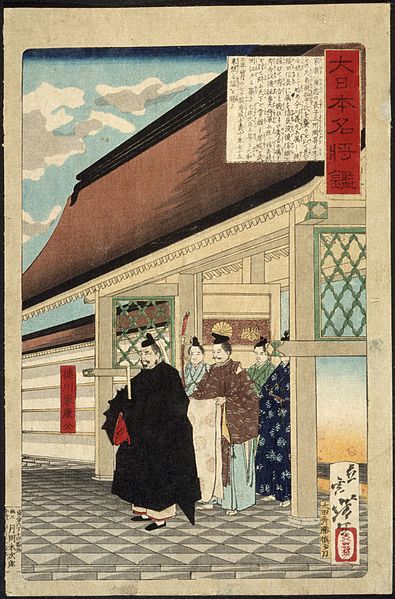
The Powerful Tokugawa Ieyasu
The Tokugawa shogunate of Japan, also known as the Tokugawa Bafuku and Edo Bafuku, was the last feudal Japanese military government. It existed between 1603 through 1867 and was a time when powerful military governors ruled the country. These military honchos were known as shōguns (generals). A shōgun’s rank and position was hereditary. Officially they were appointed by the emperor, but they were de facto rulers of the country. The “shogunate” or bafuku is considered to be the office of a shogun as well as a term for his officials. The imperial court had very minimal power compared to the political and military power the shogun and the bafuku wielded.
Print of Tokugawa Ieyasu, first shōgun of the Tokugawa shogunate of Japan.
Tokugawa Ieyasu (January 31, 1543 – June 1, 1616) was the founder and first shōgun of the Tokugawa shogunate which essentially began from the Battle of Sekigahara in 1600 until the Meiji Restoration in 1868. Ieyasu took power in 1600 and received the appointment as shōgun in 1603. He abdicated from the position in 1605 but remained in power until his death in 1616.
Tokugawa Ieyasu was born to a minor warlord in Okazaki. He started his military training with the Imagawa family and later allied himself with the powerful forces of Oda Nobunaga and Toyotomi Hideyoshi. The alliance with the two forces allowed Ieyasu to expand his lands through a triumphant attack on the Hojo family to the east.
After the death of Hideyoshi, there was a power struggle among the daimyo. Ieyasu was victorious in the Battle of Sekigahara. Even after abdicating as shōgun, he continued in his efforts to neutralize his enemies and build a family dynasty that would last for centuries.
Tokugawa Ieyasu’s military career spanned six decades that left him in effective control of the nationwide political confederation forged by Hideyoshi. Ieyasu was a shrewd politician, notable general, and an astute administrator. His career and life’s achievement were a success due to his personal longevity and judicious institutional borrowing. He outlived Nobunaga and Hideyoshi, enabling him to continue to pursue his ideals and further shape his national regime around policies shaped by the men he outlived. Ieyasu modeled his army and administration from his experience with his most dangerous enemies.
Tokugawa Ieyasu was posthumously enshrined at Nikkō Tōshō-gū under the name Tōshō Daigongen. He is considered to be one of the three unifiers of Japan, along with Oda Nobunaga and Toyotomi Hideyoshi.



